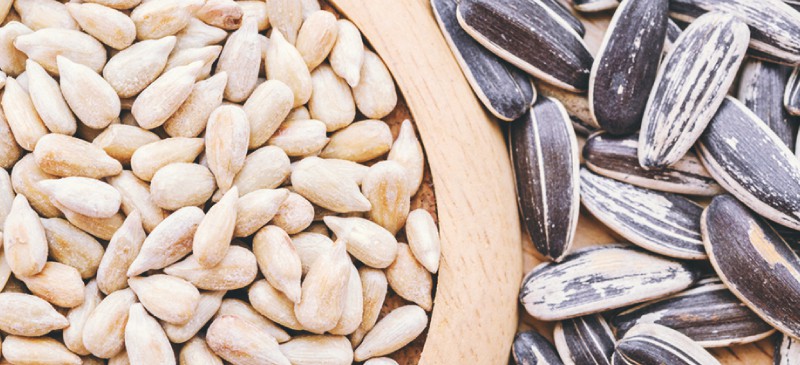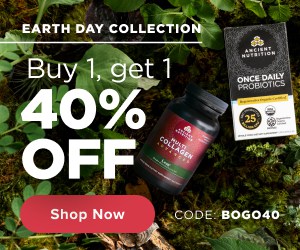This Dr. Axe content is medically reviewed or fact checked to ensure factually accurate information.
With strict editorial sourcing guidelines, we only link to academic research institutions, reputable media sites and, when research is available, medically peer-reviewed studies. Note that the numbers in parentheses (1, 2, etc.) are clickable links to these studies.
The information in our articles is NOT intended to replace a one-on-one relationship with a qualified health care professional and is not intended as medical advice.
This article is based on scientific evidence, written by experts and fact checked by our trained editorial staff. Note that the numbers in parentheses (1, 2, etc.) are clickable links to medically peer-reviewed studies.
Our team includes licensed nutritionists and dietitians, certified health education specialists, as well as certified strength and conditioning specialists, personal trainers and corrective exercise specialists. Our team aims to be not only thorough with its research, but also objective and unbiased.
The information in our articles is NOT intended to replace a one-on-one relationship with a qualified health care professional and is not intended as medical advice.
Top 10 Vitamin B5 Foods (Pantothenic Acid)
October 11, 2021

Do you know some of the best vitamin B5 foods? Well first, do you know what is vitamin B5?
Vitamin B5 is a water-soluble vitamin found in many foods. It’s also known as pantothenic acid.
What is pantothenic acid? It’s simply another common name for this key B vitamin.
Pantothenic acid actually gets its name from the Greek root “pantos” meaning everywhere because it is readily available in such a large variety of foods. Like the other B vitamins, it plays a role in energy metabolism, acting as a coenzyme to energy-producing chemical reactions. It also plays a role in the synthesis of fat, hormones and neurotransmitters in the brain.
Severe deficiencies in pantothenic acid are extremely rare and generally are only seen in severe malnutrition since it is available in most foods. However, mild deficiencies can cause several health issues.
Exactly what is vitamin B5 good for, and what foods have vitamin B5? Read on!
Top 10 Vitamin B5 Foods
Vitamin B5 foods come from both plant and animal food sources.
What foods have B vitamins? Certain meats, vegetables, grains, legumes, eggs and dairy products contain B5 as well as other essential B vitamins.
Here are some of the very best choices when it comes to upping your dietary intake of vitamin B5 foods.
1. Chicken Liver
- 3 oz: 8.3 milligrams (83 percent DV*)
Chicken, duck and beef liver are true superfoods. When it comes to foods with B vitamins, liver tops the charts.
Chicken liver is impressively high in vitamin B5 as well as B12 and is an excellent food for preventing anemia. When you buy liver, you just want to make sure that the animals are grass-fed, free-range and pasture-raised.
2. Sunflower seeds
- 3 oz: 6 milligrams (60 percent DV*)
Sunflower seeds make for such an easy and tasty snack that is loaded with vitamin B5 as well as protein and vitamin E. Research has linked eating foods high in vitamin E to a decreased risk of coronary heart disease.
3. Avocados
- 1 fruit: 2 milligrams (20 percent DV*)
Looking to get a healthy dose of dietary vitamin B5 as well as vitamin B6, not to mention healthy monounsaturated fats? Then avocado is the perfect choice.
Several studies have looked at the consumption of avocados and the effects on heart health. The results have consistently showed positive heart-healthy effects on lipid profiles (total cholesterol, LDL, HDL and triglycerides).
4. Portobello Mushrooms
- 1 cup sliced: 1.9 milligrams (19 percent DV*)
Mushrooms like the portobello are an excellent dietary source of B vitamins. The portobello mushroom is also very rich in potassium, which is key to electrolyte balance and hydration.
Potassium is also a key nutrient when it comes to keeping blood pressure levels in a healthy range.
5) Salmon
- 3 oz: 1.6 milligrams (16 percent DV*)
Wild-caught salmon is one of the best animal proteins you can eat. It’s high in B5 and so many other nutrients.
It’s also one of the best sources of omega-3 fatty acids, which are highly anti-inflammatory. Consuming anti-inflammatory food sources like wild-caught salmon on a regular basis can really boost health since inflammation is known to be at the root of most diseases.
6) Lentils
- 1 cup: 1.3 milligrams (13 percent DV*)
Lentil nutrition is really impressive. Not only are lentils high in B vitamins, but they are also a rich source of folate and manganese.
With 18 grams of protein per one-cup serving, lentils are one of the top sources of plant-based protein. If you don’t eat meat, lentils are an especially smart choice for your diet.
7) Corn
- 1 cup: 1.2 milligrams (12 percent DV*)
Corn — organic, non-GMO corn to be more specific — is a good dietary source of vitamin B5, antioxidants, fiber and complex carbohydrates. Corn has been a staple crop for thousands of years.
Nowadays, there is so much GMO corn that we have to make sure we choose our corn carefully.
8) Sun-dried tomatoes
- 1 cup: 1.1 milligrams (11 percent DV*)
Sun-dried tomatoes are basically ripe tomatoes minus the water content. Tomatoes and sun-dried tomatoes contain a compound called lutein, which along with zeaxanthin have been shown to decrease the risk for major eye issues like cataracts.
9) Eggs
- 3 oz: 0.9 milligrams (9 percent DV*)
Eggs are rich in vitamin B5 and are also a very affordable source of protein. When you opt for free-range eggs, you get even more of essential nutrients like beta-carotene and omega-3s but less cholesterol.
10. Cauliflower
- 1 cup: 0.7 milligrams (7 percent DV*)
Cauliflower is a type of cruciferous vegetable, and consumption of this class of vegetables has been linked to cancer prevention.
As a cruciferous vegetable, cauliflower is helpful to digestion and detoxification because of its sulfur-containing glucosinolates, which support nutrient absorption and waste removal.
It’s recommended to consume about two to three servings of dietary vitamin B5 foods each day.
*Daily Value: Percentages are based on a diet of 2,000 calories a day.
Benefits
There are so many dietary vitamin B5 benefits. Here are some of top reasons to consume dietary pantothenic acid daily.
1. Cardiovascular Health
Scientific research has shown that pantethine, a derivative of vitamin B5, may help lower total cholesterol as well as lower LDL (bad) cholesterol. The subjects of the 2011 study were North Americans who had low to moderate risk of developing heart disease.
2. Wound Healing
There have been some animal studies that have shown that pantothenic acid may help with wound healing, especially when combined with vitamin C.
3. Turning Food into Energy
One of vitamin B5’s most key and basic functions is to help the human body turn what it eats into fuel. B5 actually helps convert carbs, fats and proteins into usable energy.
4. Vitamin B2 Utilization
Vitamin B5 helps the body be able to effectively utilize vitamin B2 or riboflavin.
5. Healthy Digestion
When it comes to maintaining a properly functioning digestive system, vitamin B5 is one of the nutrients you can thank for helping to keep things healthy.
Vitamin B5 Deficiency
It is rare yet possible to have a B5 deficiency. Symptoms of a B5 vitamin deficiency can include:
- Fatigue
- Irritability
- Depression
- Insomnia
- Stomach pain
- Vomiting
- Upper respiratory infections
- Burning feet
- Muscle weakness
Individuals who are most at risk of a vitamin B5 deficiency include pregnant women, women who take birth control pills, smokers, alcoholics, anyone under high levels of chronic stress, people with severe malnutrition, and those with impaired absorption of vitamins and minerals due to certain medications or intestinal disorders.
Related: Vitamin B12 Benefits That You’re Probably Missing
Recipes
Ready for some recipes that pack a serious punch of vitamin B 5? Consuming recipes like these on a regular basis are a great way to obtain vitamin B5/pantothenic acid benefits.
Some delicious recipes rich in dietary vitamin B5 include:
- Pecan Pesto Salmon Recipe
- Chicken Liver Pate Recipe
- Wakame Pate Recipe (sunflower seeds are the star rather than meat liver)
- Cauliflower Tabbouleh Salad Recipe
It’s not hard to find more culinary creations that are rich in dietary B5. Simply pick a vitamin B5 food from the list above and search for recipes that include that food.
Related: Best Vitamin B Foods, Plus Their Health Benefits + Recipes
Risks and Side Effects
Consumption of vitamin B5 foods on a consistent basis is the safest way to ensure proper B5 levels. Vitamin B5 is available as a supplement in a few forms, including D-pantothenic acid as well as calcium pantothenate and dexpanthenol, which are chemically derived from D-pantothenic acid.
Speak with your doctor before taking a B5 supplement, especially if you are currently taking any other medications or being treated for any health concerns. B5 supplements are best taken after a meal with water.
Unless instructed by their doctors, pregnant and breastfeeding women should not exceed the daily dietary reference intakes of vitamin B5.
At a very high dosage, B5 supplementation may lead to diarrhea and/or an increased risk of bleeding. This is especially a concern to anyone taking blood thinners, such as warfarin or aspirin.
In terms of possible interactions between a vitamin B5 supplement and other supplements, royal jelly contains a significant quantity of dietary vitamin B5. Currently, the possible effects of taking vitamin B5 supplements and royal jelly supplements at the same time are not known.
Final Thoughts
Vitamin B5 foods are not hard to find or expensive. It’s not common to have a B5 deficiency, but you want to meet the dietary reference intakes each day if you can.
From meat to fish to vegetables to beans, there are so many choices when it comes to healthy and delicious B5-rich food options. With all of the many vitamin b5 benefits to your health, I hope you’ll try one (or a few) of my vitamin B5-rich recipes soon and continue to consume vitamin B5 foods daily.










